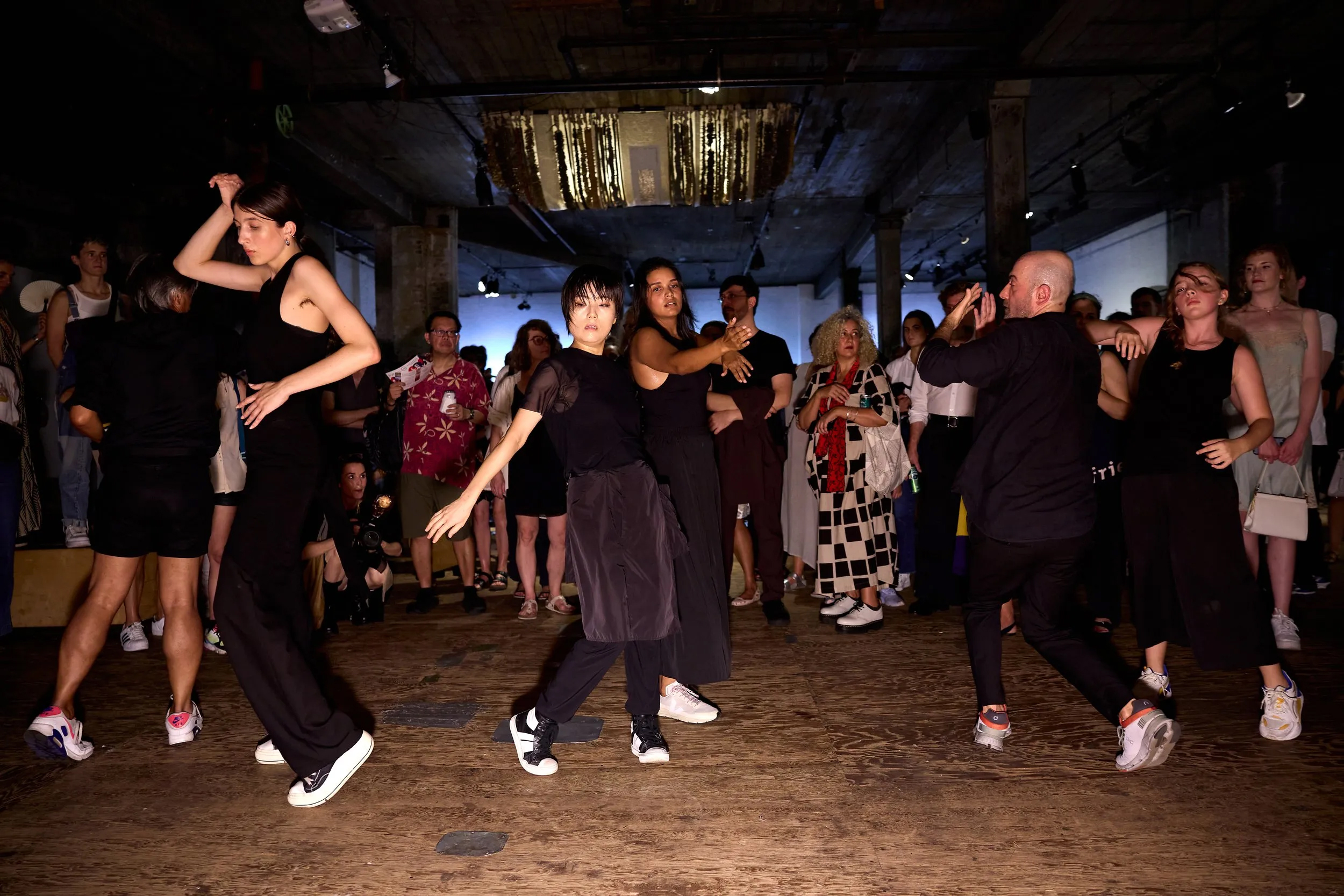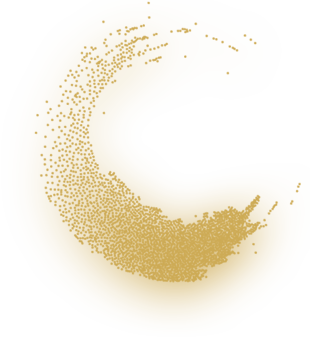Order, Chaos, and Wax

Photo : Argenis Apolinario
Thierry Thieû Niang’s “One” at the opening of Camille de Galbert’s “Growing Matter” exhibit celebrated universal harmony, evolution, and life at the molecular level.
At the opening reception for Camille de Galbert’s “Growing Matter” — a selection of coral-like wax and resin sculptures — attendees mingled about the Invisible Dog Art Center in Brooklyn, with soft drinks in hand. Hardly anyone looked up when a loud crash boomed through the speakers — like a pile of metal plates falling to the floor. It took a while for us to realize that nine people hanging around and dressed like us in casual black outfits and sneakers, constituted the dancers in “One,” choreographed by Thierry Thieû Niang. They wove about the room as ambient music played, purposefully avoiding eye contact and brushing shoulders to draw everyone’s attention to Galbert’s sculptures. As they crept toward the center of the room and wrapped around each other like seaweed, Debussy’s “Prélude à l’après-midi d’un faune” — opening with its somber, hypnotic flute melody, and then joined by strings, harps, and horns — swelled up, signaling the official beginning of the piece.
Interacting with the sculptures both thematically and materially, “One” transformed their irregular shapes and thick textures into a multi-sensory, kinetic experience. In an age of digital dominion, the evening offered a heartening reminder of the age-old idea that nature, though appearing random, has a design, often a beautiful one. In Galbert’s case, the sculptures consist of layers upon layers of wax drippings — pinks, reds, whites, and blues, blended as they succumbed to gravity. They seem to have fallen into delicate lines and pooled neatly, even inevitably, into place. For “One,” Niang worked with a company of non-professional dancers ranging from adolescence to late middle age, and built the dance from everyday movement. These natural, lightly manipulated materials produced the strangely heartening sense that humans and geological formations stem from the same earthly source.
For nine minutes, dancers buzzed across the exhibit floor, cutting through clusters of people and dancing frantically in front of different sculptures before uniting in the room’s center. One performer threw her body around in circles and made grand, sweeping motions with her arms and legs. Another stomped his feet as loudly as possible to interrupt Debussy’s tranquil melody, while a nearby dancer gently swayed side-to-side, stroking her face and closing her eyes. The audience had the freedom to walk around during the performance, and our constant movement physically connected us to the piece. We surrounded the nine performers as they reached for each other’s hands for the finale ; then, when the dancers ran out of the building at the end of the performance, we followed them like an entranced mob. In less time than it takes to boil an egg, Niang had managed to connect every mind and body to the dance, forming an organic blob from individual parts. As the title suggested, we became one.
“One” was performed during only the first two evenings of Galbert’s exhibit, which is on view until October 14 as a part of the French Institute Alliance Française’s Crossing The Line Festival. That’s a pity because on their own, the sculptures, while evocative, are inevitably more inert.
Galbert’s encaustic art explores the concept of natural order in chaos. Citing fractal art as an inspiration for this project, Galbert investigates the phenomenon of self-replication. The Strata series — bright red, pink, and blue wax and resin sculptures that resemble coral reefs — depended on the unpredictable raw materials to create repeating patterns. Like other pieces in the exhibit, they movingly reveal how earthly formations take shapes that repeat in the human body, and how the beauty we find in them also exists within us. Invertebrate #3’s layers of white, blue, pink, and red wax molded together into a candle-like pillar resembling a chunk of raw human flesh ; the drips of wax suggest arteries, veins, and skin. Dermis #3 and Dermis #4 look like drops of blood in water, but their translucent, waxy gloss also evokes the inside of a human cheek.
Galbert’s wax dripping technique is visually stunning, but in exploring replication, they come to be repetitive themselves.
While Galbert’s work reflects human connection to the rest of the earth, Niang’s addition better emphasized that humans — like cells, coral, and rocks — are individual parts of a greater whole. “One” demonstrated that evolution is a process that may take eons on a micro level, yet also moves in the blink of an eye when considered in the grander scope of the universe.
By Victoria Borlando - Medium.com - October 10th 2023
Voir en ligne : Read this article on the website Medium.com
Représentations & évènements à venir
25 février 2025 27 février 2025 à 20H00
Ovni rêveur, le corps éparpillé dans la têteThéâtre de Lorient
